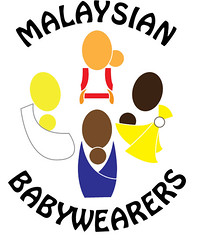Babywearing might be new to you but it is certainly a traditional practice well worth going back to.
Wearing my baby makes life so much easier. I did my laundry, did the dishes, shopped til we dropped… with my little one in the pouch. Babywearing was a lifesaver on the days he was sick and clingy. Babywearing was the best when we needed to explore a new place.
Especially with the kind of news we hear about kidnapped children... I feel much better bringing Arthur out in a carrier... not to mention those occasions when I would prefer him to be close to me when we are crossing the roads, attending a crowded fair or just browsing through a ‘pasar malam’.
For this peace of mind and closeness with my baby, I wouldn't mind being term old-fashioned at all. And, did I tell you the Peek-a-Pouch can be trendy, after all?
Wearing my baby makes life so much easier. I did my laundry, did the dishes, shopped til we dropped… with my little one in the pouch. Babywearing was a lifesaver on the days he was sick and clingy. Babywearing was the best when we needed to explore a new place.
Especially with the kind of news we hear about kidnapped children... I feel much better bringing Arthur out in a carrier... not to mention those occasions when I would prefer him to be close to me when we are crossing the roads, attending a crowded fair or just browsing through a ‘pasar malam’.
For this peace of mind and closeness with my baby, I wouldn't mind being term old-fashioned at all. And, did I tell you the Peek-a-Pouch can be trendy, after all?
"Dr. William Sears, a pediatrician, coined the phrase attachment parenting. One of Sears' principles of attachment parenting is babywearing and he attributes many benefits to babywearing and the in-arms style of parenting.
Claimed benefits of babywearing include:
- Mothers' progesterone (mothering hormone) is increased through physical contact with the infant, leading to a more intimate maternal bond, easier breastfeeding and better care, thus lowering the incidence of postpartum depression and psychosomatic illness[citation needed].
- Infants who are carried are calmer because all of their primal/survival needs are met. The caregiver can be seen, heard, smelled, touched, tasted, provide feeding and the motion necessary for continuing neural development, gastrointestinal and respiratory health and to establish balance (inner ear development) and muscle tone is constant.[1]
- Infants are more organized. Parental rhythms (walking, heartbeat, etc.) have balancing and soothing effects on infants.
- Infants are "humanized" earlier by developing socially. Babies are closer to people and can study facial expressions, learn languages faster and be familiar with body language.[2]
- Contrary to western cultural myths, independence is established earlier.[1]
- Attachment between child and caregiver is more secure.[3]
- Decreases risk of positional plagiocephaly ("flat head syndrome") caused by extended time spent in a car seat and by sleeping on the back. Sleeping on the back is recommended to decrease the risk of SIDS. Cranial distortion resulting from non-vehicular time in car seats has shown to be more severe than in children who develop plagiocephaly from back-lying on a mattress. [4] Concern over plagiocephaly has also led the American Academy of Pediatrics to recommend that infants “should spend minimal time in car seats (when not a passenger in a vehicle) or other seating that maintains supine positioning. [5] None of the babywearing positions require infants to lie supine while being carried. Infants can even be worn while they sleep, also decreasing sleeping time spent in a supine position. "
Read and find out more about babywearing from these links:

















